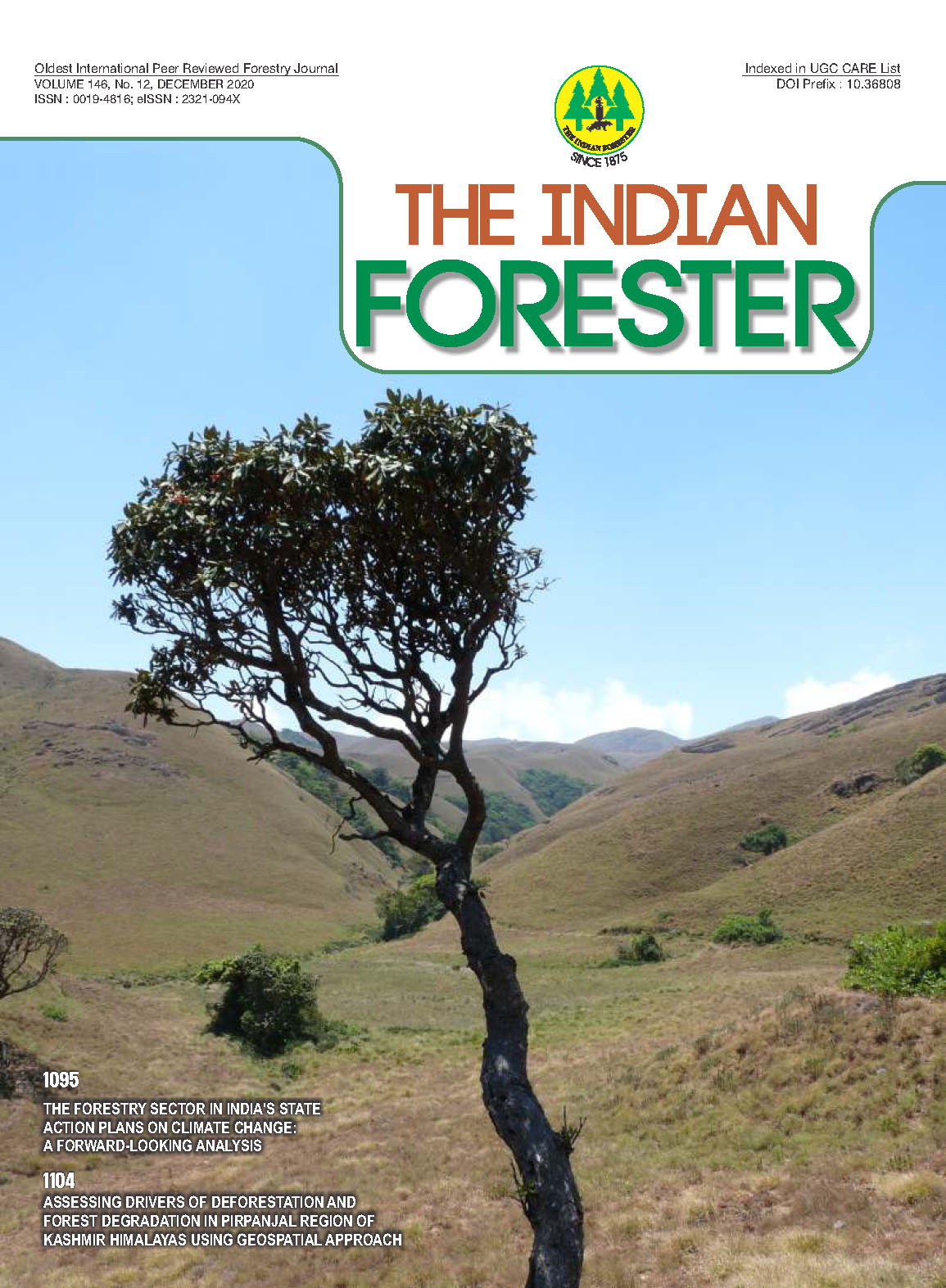Inventory on Deciphering Interiors of Commercially Important Indian Trees Using 3D Electric Resistance Tomograph (ERT)
DOI:
https://doi.org/10.36808/if/2020/v146i12/156777Keywords:
Electric Resistance Tomograph, Santalum album, Pterocarpus santalinus, Sapwood, Heartwood.Abstract
Tree Tronic tomograms are one among the advanced non-destructive method aiding for tree inspection. This method gives high resolution with more precision in measuring the sapwood, heartwood, stress and decay in the living trees. Our study focused on understanding the internal wood structural details using 3D images of Electric Resistance Tomograph (ERT) for commercially important tree species viz. Santalum album L. (Sandalwood) and Pterocarpus santalinus L.f. (Red sandalwood/sanders) of India. Initially, using ERT, the tree resistivity offered across the crosssections of the stems at different heights from the ground was recorded. The combined effect of moisture content in the sapwood and resistivity offered by heartwood presented a non-invasive 2D cross sectional images at each height with color differentiation from blue (low resistance) to brown (high resistance). In the healthy trees the concentric ring structure and the compactness of the wood at the center offered maximum resistance and gradually decreased towards the bark. However, 2D images failed to give the overall scenario of the structural details at different heights of tree stem. Hence, the 2D images of the individual trees were placed in the descending order with respect to the height measurements from the ground to give 3D images. The 3D imagery demonstrated in our study depicts the effective mode of representing the resistivity distribution along the stem to further differentiate the sapwood and heartwood in the standing tree.References
Bieker D. and Rust S. (2010). Non-destructive estimation of sapwood and heartwood width in Scots pine (Pinus sylvestris L.). Silva Fennica, 44(2): 267-273. http://dx.doi.org/10.14214/sf.153.
Brazee N.J., Marra R.E., Göcke L. and Wassenaer P.V. (2011). Non-destructive assessment of internal decay in tree hardwood species of northeastern North America using sonic and electrical impedance tomography, Forestry, 84(1): 33-39. Doi:10.1093/forestry/cpq040.
Bucor V. (2005). Ultrasonic techniques for non-destructive testing of standing trees, Ultrasonics, 43: 237-239.
Chen Y.S., Huang Y.S. and Chen S.S. (1998). A study on moisture distribution of green wood and variation of specific gravity in Cryptomeria japonica D Don, Taiwan, Journal of Forest science, 13: 91-100.
Elliott M.L., Broschat T.K. and Göcke L. (2016). Preliminary evaluation of Electrical Resistance Tomography for imaging palm trunk, Arboriculture and Urban forestry, 42(2): 111-119.
Elwaseif M., Holbrook W.S., Ewers B. and Peckham S. (2014). Imaging trees interior using 3D electrical resistivity tomography. In: Proceedings: Symposium on the Application of Geophysics to Engineering and Environmental Problems, 2014 in Boston. 16-20 March, 2014:46-46. https://doi.org/10.4133/SAGEEP.27-022.
Guyot A., Ostergaard K.T., Lenkopane M., Fan J. and Lockington D.A. (2013). Using electrical resistivity tomography to differentiate sapwood from heartwood: Application to conifers, Tree Physiology, 33: 187-194.
Lin C.J., Chang C.H., Yang T.H. and Lin F.C. (2012). Detection of electric resistivity tomography and evaluation of the sapwood-heartwood demarcation in three Asia Gymnosperm species, Silva Fennica, 46: 415-424.
Nicolotti G., Socco L.V., Martinius R., Godio A. and Sambuelli L. (2003). Application and comparison of three tomographic techniques for detection of decay in trees, Journal of Arboricultural, 29: 66-78.
Downloads
Downloads
Published
How to Cite
Issue
Section
License
Unless otherwise stated, copyright or similar rights in all materials presented on the site, including graphical images, are owned by Indian Forester.





